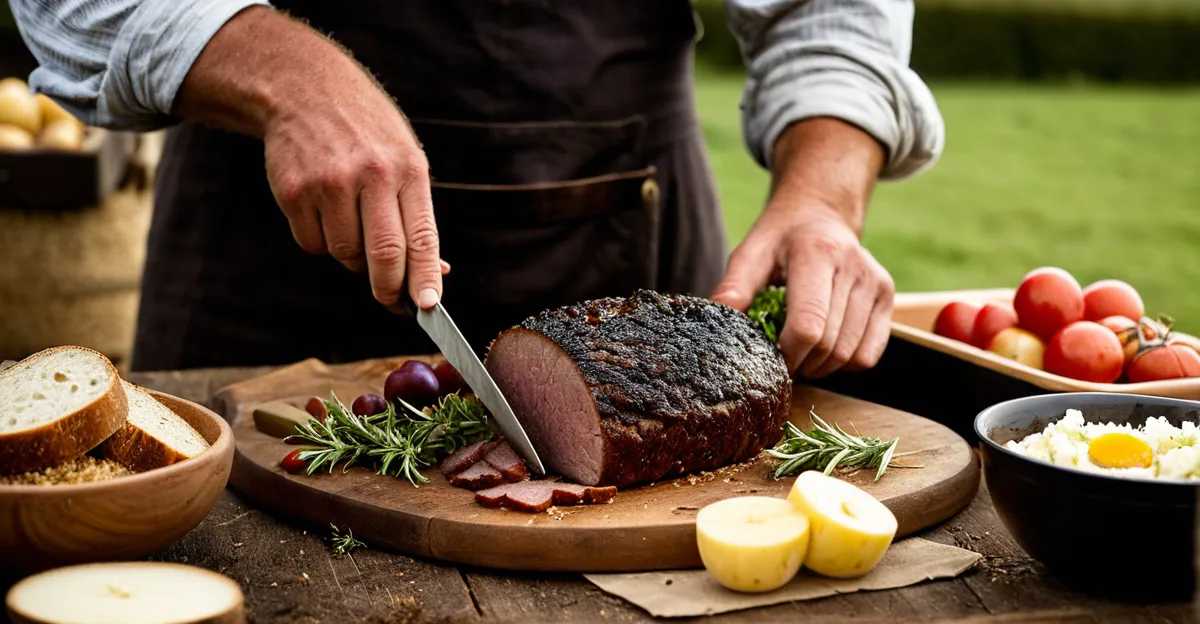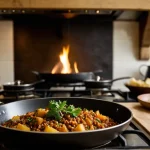Key elements of a traditional ploughman’s lunch
A traditional ploughman’s lunch embodies simplicity and hearty British flavours. Its core ingredients reflect rustic agriculture and communal dining, making it an iconic example of British lunch foods. Central components include a variety of cheeses, typically Cheddar, Stilton, or Red Leicester, paired with thick slices of crusty bread. These staples deliver texture and a rich, savoury base for the meal.
Pickles play a crucial role, adding sharpness and balance. Branston pickle, pickled onions, and chutneys offer vibrant contrasts to the creamy cheeses and dense bread. Cold meats, such as ham or other cured cuts, contribute protein and depth, though some variations focus solely on cheese to accommodate diverse preferences.
Additional reading : How Do Traditional British Recipes Influence Today’s Culinary Trends?
Salad vegetables—crisp lettuce, fresh tomatoes, and crunchy celery—introduce freshness and a pleasant palate cleanser. These elements reflect the ploughman’s lunch history rooted in rural England, where farmworkers required nutritious, portable meals.
Regional variations have emerged over time, with some areas featuring specific cheeses or local pickles. Despite this evolution, the essence remains consistent: a balanced, straightforward plate celebrating Britain’s culinary heritage and farm-to-table ethos. This combination keeps the ploughman’s lunch a popular and adaptable choice for many British diners today.
Additional reading : How can you explore regional British cuisines in your own kitchen?
Prepping the core ingredients
Selecting the right cheese is crucial when preparing a traditional ploughman’s lunch. Common choices include Cheddar, Stilton, and Red Leicester—each bringing distinctive textures and flavours. Cheddar offers a sharp, firm bite, while Stilton presents a creamy, crumbly contrast. Red Leicester adds a mellow, slightly nutty profile. When prepping, cheeses should be sliced or chunked to allow tactile enjoyment and ease of pairing with other elements.
Artisan bread is another pillar of the traditional ploughman’s lunch ingredients. Dense, crusty varieties like farmhouse loaves or sourdough provide the perfect base, balancing the moisture and intensity of cheeses and pickles. Bread should be sliced thickly—this ensures it can hold up against moist accompaniments without becoming soggy.
British pickles are essential for adding zing and complexity. Branston pickle, crunchy pickled onions, and various chutneys bring a sharp, sweet, and tangy dimension. These condiments are not mere extras; they are integral in accentuating the rustic charm and flavour contrasts innate to the ploughman’s lunch history. Properly prepping and portioning these pickles ensures each bite maintains balance and authenticity.
Additional accompaniments and customisations
Complementing the traditional ploughman’s lunch ingredients are classic ploughman’s lunch sides that enhance both flavour and nutrition. Popular additions include slices of ham, which introduce a delicate saltiness and protein boost. Boiled eggs serve as a hearty, protein-rich alternative, especially appreciated in colder seasons. Fresh apple slices contribute a crisp sweetness, offering a refreshing contrast to the savoury cheese and pickles. Salad leaves, such as watercress or mixed greens, add a subtle peppery freshness without overwhelming the plate.
For those seeking variation, vegetarian alternatives fit seamlessly within the meal’s rustic ethos. Roasted vegetables, marinated artichokes, or grilled mushrooms can replace cold meats, maintaining the traditional garnishes’ balance of textures and flavours. These substitutions respect the ploughman’s lunch history while catering to dietary preferences.
When assembling, balance is key. Layering components to juxtapose creamy cheeses with crunchy pickles and crisp fruits creates an engaging eating experience. Portion control ensures no flavour overshadows another—cheese, bread, and sides should harmonize, not compete. Customising the lunch with thoughtful sides makes this British lunch food both versatile and timeless, appealing to a wide range of palates.








